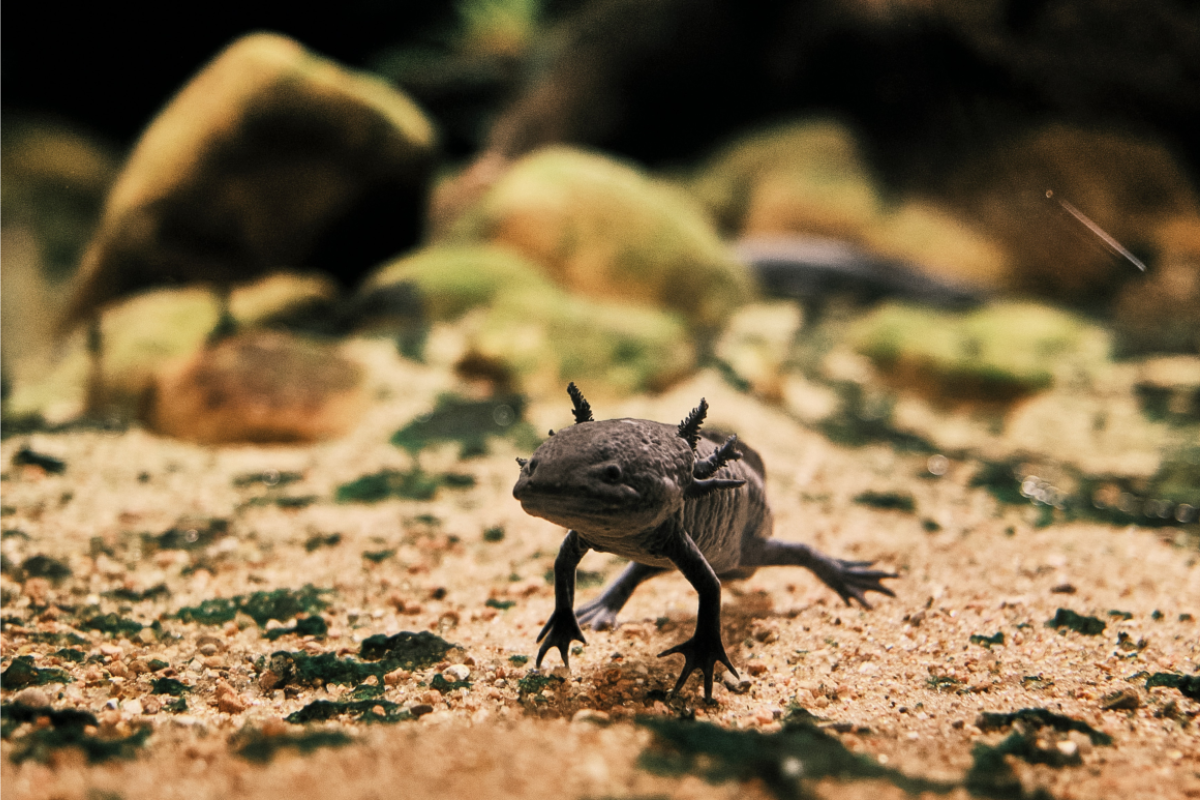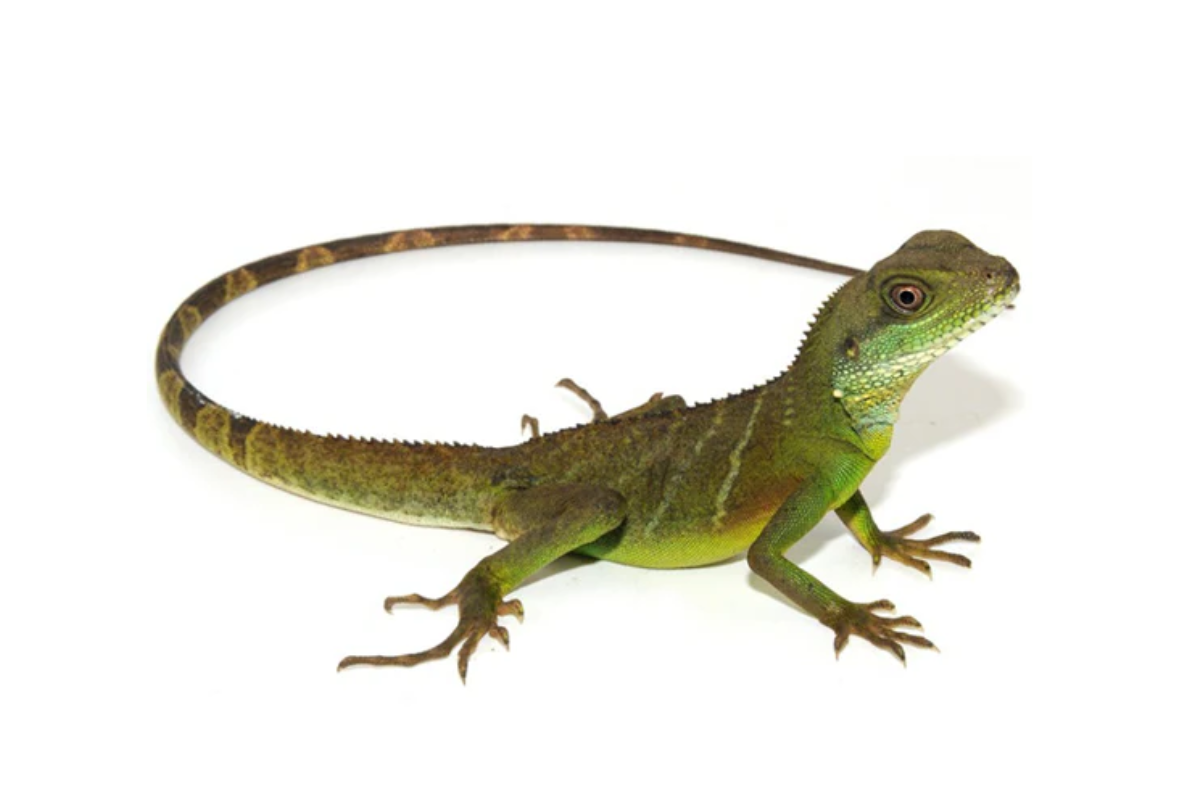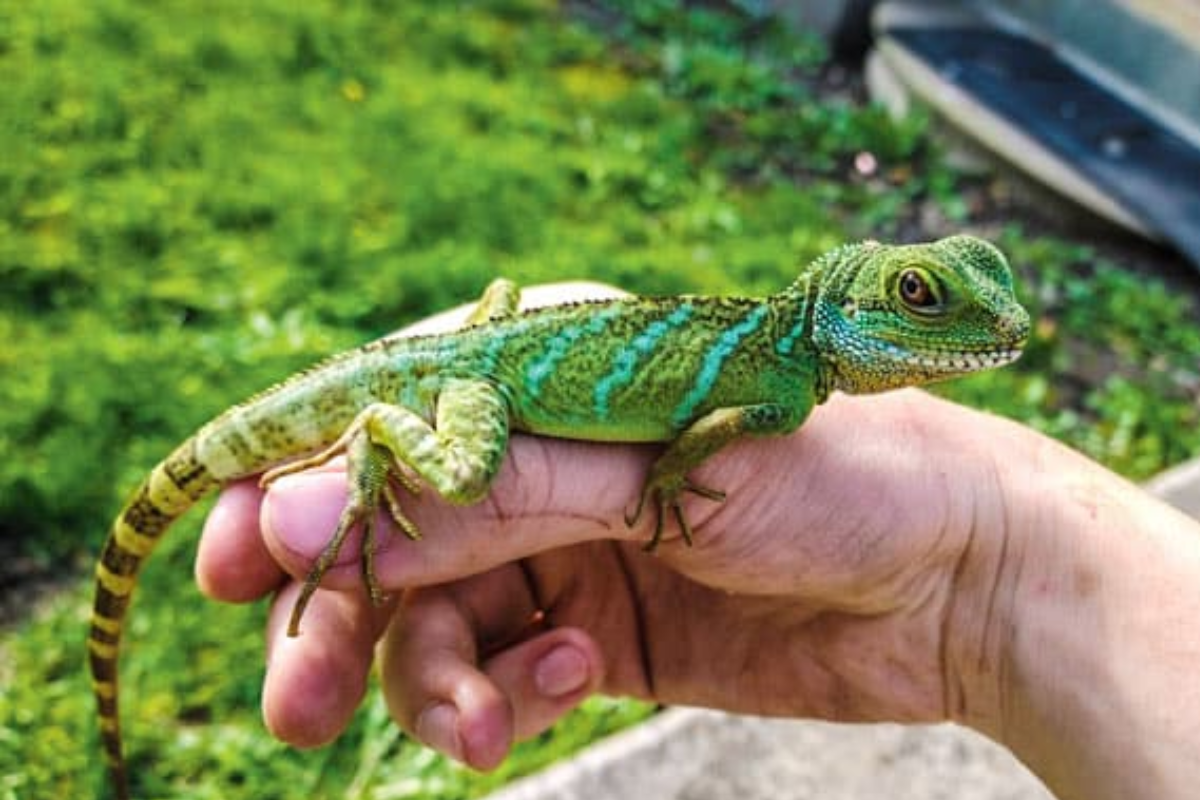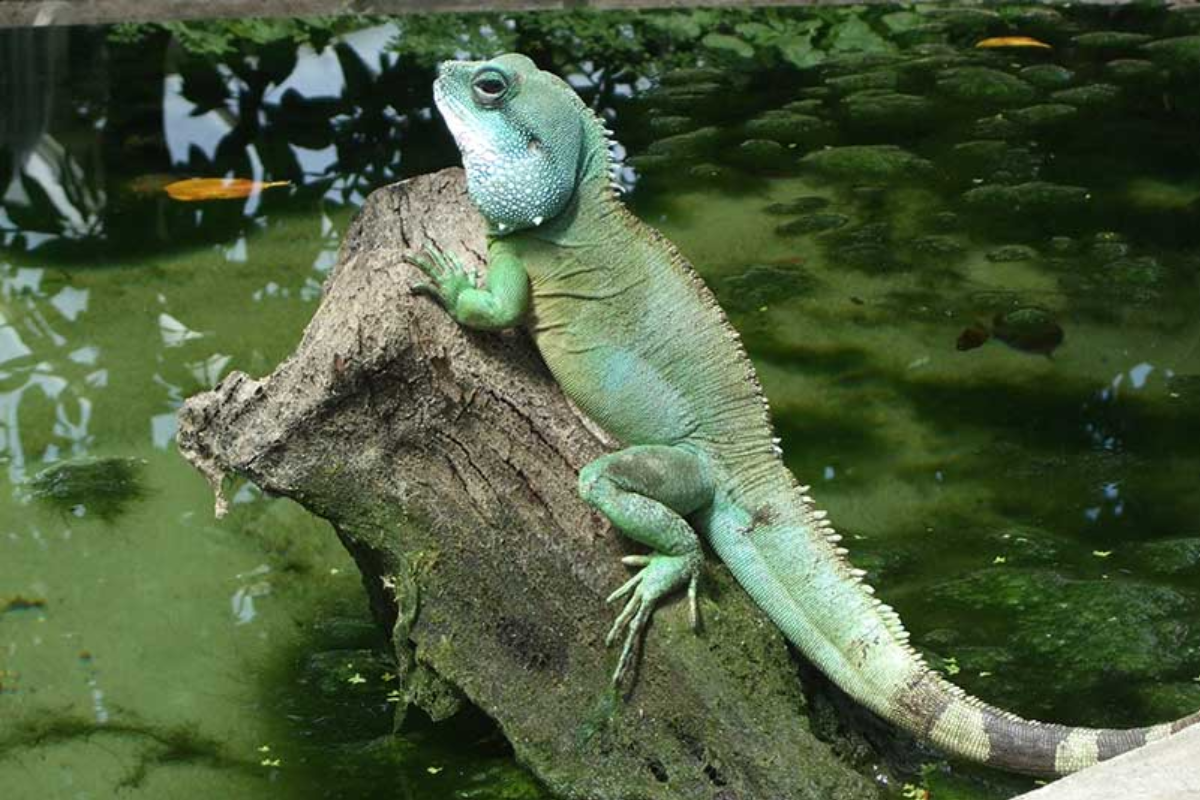Before acquiring a water lizard as a pet, many steps need to be undertaken, such as understanding its habitat requirements, nutritional needs, and health-related factors. This detailed guide aims to inform potential lizard owners about the various types of water lizards, information on their habitats, and the equipment that will allow them to build the required environment. Apart from attending to the abovementioned issues, we will also discuss dietary strategies that will ensure the most appropriate level of nutrient intake for the lizards, common health challenges, and the steps that can be taken to avoid them. This article seeks to systematically help you understand how to create an ideal habitat for your water lizard so that its health and well-being are preserved throughout its life.
Why Do Water Dragons Make Good Pets?

Water dragons make beautiful pets due primarily to their engaging personalities and appealing look. Their stunning design and colors make them a great aesthetic enchanter in any enclosure. It should also be noted that water dragons can be bothered walking on their feet, but they are calm and used to people if they are properly socialized. They are pretty intelligent, and their curiosity makes them interactive pets. Water dragons are very easy to maintain and thrive in an ideal environment, enhancing the experience of keeping reptiles for pet lovers.
Understanding the Nature of Water Dragons
Water dragons, also known as Physignathus, are semi-aquatic reptiles native to the forests and waterways of Southeast Asia and Australia. They are typically characterized by their striking green coloration, which aids in camouflage, and a crest of spines running along the back. Understanding their natural behavior and habitat is crucial for their care in captivity.
Habitat Requirements:
- Temperature and Humidity: The habitat of water dragons needs to mimic their natural environment precisely. Ideal ambient temperatures should range between 84°F to 88°F (29°C to 31°C) during the day, with a basking spot reaching around 95°F (35°C). Nighttime temperatures should fall between 75°F and 80°F (24°C to 27°C). Maintaining high humidity levels, preferably between 60% to 80%, is vital to prevent dehydration and support healthy shedding processes.
- Enclosure Size: Given their active nature and need for space, a minimum enclosure size of 6 feet long, 2 feet wide, and 3 feet high (1.8m x 0.6m x 0.9m) is recommended for a single adult water dragon.
Behavior Characteristics:
- Social Structure: Water dragons are generally solitary in the wild but can adapt to living in pairs or small groups in captivity when ample space and resources are provided.
- Activity Patterns: These diurnal creatures are most active during the day, requiring a naturally lighted environment, preferably supplemented with UVB lighting to ensure proper calcium absorption and bone health.
Understanding these technical parameters enables potential owners to create an optimal environment that supports water dragons’ innate behavioral and physiological needs, ensuring a harmonious and sustainable pet-keeping experience.
Comparing Water Dragons with Other Lizard Species
Several distinct characteristics and care requirements emerge when evaluating water dragons against other popular lizard species, such as bearded dragons, leopard geckos, and iguanas. The comparative analysis highlights key differences in habitat needs, dietary preferences, and social behaviors.
Habitat and Environmental Needs:
- Bearded Dragons: These lizards require a hot, arid environment. Tank temperatures range from 95°F (35°C) in basking spots to around 75°F (24°C) in cooler areas, and humidity is kept low at 30-40%. Their enclosures should be spacious, with a minimum size of 4 feet long and 2 feet wide by 2 feet high (1.2m x 0.6m x 0.6m).
- Leopard Geckos: Preferring drier conditions, these nocturnal reptiles thrive at ground-level temperatures of 88°F to 92°F (31°C to 33°C) in their warm areas and a more controlled overall humidity level of 30-40%. A smaller tank, usually 20 gallons, suffices for a single gecko.
- Iguanas: Necessitating large enclosures typically span 5 to 7 feet long, iguanas demand lush environments, requiring 80-85°F (27-29°C) daytime temperatures and ample UVB lighting similar to water dragons for bone health.
Dietary Preferences and Nutritional Needs:
- Water Dragons: Primarily insectivorous with some fruit and leafy vegetables. Their diet should maintain a calcium-to-phosphorus ratio 2:1 to prevent metabolic bone disease.
- Bearded Dragons: Omnivorous diet; relies heavily on insects during juvenile stages but shifts to more vegetables as adults.
- Leopard Geckos: strict insectivores that require live prey, such as crickets and mealworms, dusted with calcium and vitamin D3.
- Iguanas: Herbivorous, requiring a diverse range of leafy greens and vegetables to meet their dietary fiber and mineral needs.
Social Behavior and Interaction:
- Bearded Dragons and Iguanas: Well-known for their docile nature, making them suitable for handling and interaction without stress.
- Leopard Geckos :generally tolerate handling but are solitary and do not rely heavily on social interaction.
- Water Dragons: As already noted, they can coexist with conspecifics in spacious environments and often display interactive behaviors when well-socialized.
The comparison underscores that while water dragons have similarities with their reptilian counterparts, particularly in light and temperature requirements, their semi-aquatic nature and sociability necessitate distinct care considerations. Understanding these variables ensures informed decisions and a successful reptile-owning experience.
Benefits of Having a Pet Lizard
Owning a pet lizard has helped me in many ways, both personally and on an educational level. One main benefit is that they require minimal affection, which makes it easy to own them, even if I have a tight schedule. Unlike pets such as dogs and cats, lizards do not require much attention as long as it is provided regularly, allowing me flexibility in my routine. Also, it has been an incredibly fascinating experience for me to understand the biology of reptiles through watching their behavior and adaptations to their environment. In addition to education, lizards help develop a specific atmosphere at home. Their calm behavior and low activity noise make them ideal pets for quiet homes. Lastly, lizards come in many different varieties; hence, I was able to go for the one that I could properly care for and fit my house perfectly, which has been a great joy.
How to Care for a Chinese Water Dragon

There are vital factors, such as their habitat and feeding patterns, which a pet owner must be keen on when loving a Chinese Water Dragon. Structurally, caring for the lizard starts with providing an adequately large enclosure similar to a rainforest biome. More significantly, a temperature range of 84°F to 88°F during the day with a cool temperature of 75°F to 80°F during the night owing to the use of heat lamps and ceramic heaters. Moisture should generally stay between 60% to 80%, and this is achieved through frequent mist spraying and the provision of a big bowl containing water for drinking and swimming. Adequate lighting is helpful, requiring UVB fluorescent bulbs so that vitamin D3 can be synthesized more efficiently for better calcium absorption.
In terms of its diet, a Chinese Water Dragon is an omnivore that does well with a varied diet. One should provide a combination of gut-loaded crickets, mealworms, waxworms, and vitamins in the form of collard greens, bell peppers, or strawberries. One should dust food items with calcium powder to prevent metabolic bone disease. Ordinary health checks are essential in evaluating their health status; they look for clinical signs of stress, dehydration, and malnourishment and seek the attention of a veterinarian skilled in treating reptiles whenever necessary. Following these care instructions will keep your Chinese Water Dragon healthy and active during all stages of its life.
Setting Up the Perfect Enclosure
To put in place the ideal enclosure for my Chinese Water Dragon, it was necessary to conduct thorough research and consider some technical parameters. I prepared my enclosure for about 6 feet in length, two feet in width, and three feet in height to allow the body room for movement and climbing. The important thing was that the daytime temperature averaged between 84-88 degrees Fahrenheit, whereas the nighttime averaged 75-80 degrees Fahrenheit, maintained by strategically placed heat lamps and ceramic heaters. Moreover, the humidity level, vital for these types of dragons, was maintained between 60 percent and 80 percent with the help of a misting system and a big dish of water, which also acted as a swimming pool. Vitamin D3 is necessary for bone building, and UVB fluorescent bulbs were used to light it. These technical parameters, which correspond to the opinions of professional experts, were of great importance to make the enclosure safe and healthy.
Feeding the Chinese Water Dragon: What Do They Eat?
When developing an appropriate diet for my Chinese Water Dragon, I turned to experts in reptile care. I understand that they need to eat animal and plant matter. Most of all, I feed him various gut-loaded insects, crickets, and mealworms, which I dust with calcium powder. Apart from the insects, I include some fruits like squash or mangoes and green vegetables such as mustard greens so that they cover all the nutrients. As experts recommend, it is also essential to vary the diet to maintain my pet’s health and prevent diseases. I also closely monitor their portion sizes and feeding frequency and amend them as my dragon grows. Following such feeding practices gives me confidence that I can meet the dietary requirements of the Chinese Water Dragon quite well.
Maintaining Proper Water Quality and Conditions
Proper water quality and conditions ought to be maintained in the case of a Chinese Water Dragon due to its semi-aquatic nature. First, offer a large shallow dish or pond for swimming and drinking in the enclosure. The water should be changed often to reduce bacterial colonization; usually, it should be replaced at least every two or three days or as soon as it gets dirty. Dechlorinator drops are effective in conditioning the water and assist in maintaining the chemical composition of the water since both chloramines and chlorine are toxic to your dragon. It is also essential to monitor the water temperature with the optimum room temperature (72 °F to 80 °F) to reduce stress on the dragon. In addition, water filtration systems can help maintain water quality over a longer period. Observing and following these parameters guarantees a safe and secure aquatic environment for the Chinese Water Dragon.
What Are the Health Considerations for a Water Dragon?

A few care activities target their well-being and should be included in the care routine of a water dragon. Generally, a veterinary check-up with a reptile expert must be done every quarter to detect disease early and deal with it appropriately. There is a need to be cautious of the symptoms of respiratory pox, especially when the humidity or temperature within the enclosure is not ideal. Always provide a proper diet focusing on vitamins, calcium, insects, vegetables, and fruit to avoid possible shortfalls in some nutritional needs. Another thing that needs attention is a metabolic bone disease, which can develop from calcium deficiency or insufficient UVB exposure. Detect signs of skin infections or parasites, and on occasions, examine the dragon’s skin and scales for abnormalities. It is possible to improve the health and quality of life of water dragons by following best practices for care, optimizing their environment, and dealing with disease quickly.
Signs of a Healthy Reptile
Identifying a healthy reptile’s well-being is possible by examining its physical features and body behaviors. A healthy Chinese Water Dragon must have moist and colored skin with no shedding problems or sores. The eyes should be bright and able to move quickly and freely in response to action or light. This is an indicator of good health and awareness. The appetite is another key sign. An active dragon can maintain a steady weight and most ravenously gobbles different kinds of food. Occasional stools of appropriate shape are also a sign of a well-functioning system. The activity levels should be as always: the reptile should be curious and typically busy about the surroundings. A stress situation, remember also the technical parameters: these are UVB for calcium absorption and bone health; daytime they should be within 84 to 88°F, and nighttime, 75 to 80°F; humidity between 60 and 80% to prevent respiratory problems as well as facilitate the shedding of the reptile’s skin. The health and well-being of your pet can also be maintained in advance, provided you follow these recommendations and control your pet constantly.
Common Health Issues and How to Prevent Them
In my experience and research from leading reptile care websites, some prevalent health issues for Chinese Water Dragons include respiratory infections, metabolic bone disease, and skin disturbances such as parasites or fungal infections. Respiratory problems can often be traced back to suboptimal humidity or temperature levels within the enclosure. To prevent these, I ensure the moisture stays between 60% to 80% and temperatures remain stable—daytime at 84°F to 88°F and nighttime at 75°F to 80°F. Metabolic bone disease stems from a calcium deficiency or lack of UVB exposure and can be mitigated by ensuring a diet rich in calcium and using quality UVB lighting. I frequently inspect my dragon’s skin for signs of parasitic or fungal infections, maintaining excellent hygiene by regularly cleaning the enclosure and providing fresh, dechlorinated water. I significantly enhance my water dragon’s health and longevity by diligently following these best practices and proactively adjusting environmental and dietary conditions.
Veterinary Care for Your Water Dragon
For my Chinese Water Dragon to receive the best veterinary procedures, it is my habit to visit a qualified reptile vet regularly. Ideally, check-ups should be done biannually since they are essential in addressing early health problems. Such a veterinary doctor is in a position to offer screenings for many common complaints, such as parasitic infestation, respiratory infections, and metabolic bone disease, and appropriate action should be taken where necessary. For the technical parameters, a setup is essential. To help prevent bone disease, the recommendation for UVB lighting is 10-12 hours a day to enhance calcium absorption. Daytime temperatures in the range of 84°F to 88°F and 75°F to 80°F at night ensure the donor dragon is comfortable physically. Humidity should also be controlled within the 60% to 80% range to shield from respiratory diseases. With sound knowledge and help from credible websites, I feel comfortable understanding that these parameters enable me to work hand in hand with veterinarians in caring for my water dragon and prolonging its life.
Where to Get Your Water Lizard: Choosing Between Breeders and Pet Stores

As you plan on getting your water lizard, consider the advantages and disadvantages of sourcing it from either the breeders or the pet stores. Often, it is the case that breeders provide water lizards that have been raised in more ethical conditions, and more is known about their lineage, health matters, and care. It is also likely that the option ensures that the lizard is adequately taken care of from birth, thus becoming a healthier and more human-friendly lizard. On the flip side, such breeders may be less easily accessible and tend to be more expensive. On the other hand, it is more convenient and time-saving for pet stores because one can interact with different lizards before finally settling for one.
Nonetheless, a background check of the place, the m/z type of animals, and the professional staff working there is a must. There could be several lizards in the pet shops, but their range of temperament and care is less well-documented and thus would be unsuitable for persons looking for particular insight. Ultimately, it boils down to weighing between the two options based on the factors that rank highly in your lists of considerations, such as how easy it is, how much it costs, and how much assurance on the care of the lizard is required.
Advantages of Buying from a Breeder
Buying a water lizard from a reputable breeder comes with many advantages. To begin with, the breeders usually have detailed information about the lizard’s lineage, health status, or genetics. This information is essential when assessing the degree of health issues that may present in the future and taking care of them. Similarly, these breeders raise their lizards in an ideal environment closer to their natural surroundings of light, temperature, humidity, and other conditions good for the reptile. To achieve these technical parameters, for instance, one may need to keep daytime temperatures in the range of 84 to 88 degrees Fahrenheit.
In comparison, nighttime temperatures are maintained within 75 to 80 degrees Fahrenheit. It is also essential to keep humidity within 60% to 80%. It is also responsible for socializing the lizards better with people so that stress is kept at bay and the lizards can be handled easily. Although breeders might charge more at the initial stages, the health benefits they will have in the long run and the veterinary risks will be less, which is why such prospective owners looking for a strong and healthy pet would prefer it.
What to Look for in a Reputable Pet Store
The first step I take in search of a reputable pet shop is to examine how clean and well-organized the place is, as high hygiene levels are mandatory. There are many pet shops out there, and most of them have a good range of reptiles. I only go to those where their staff know even the basics of the reptiles, such as their health signs and care requirements. Subsequently, I assess the living conditions before purchasing an animal: the size of enclosures and their state, as well as how well they are designed to provide the right temperature and humidity of the environment. I also ask for health guarantees, such as the state of the purchased lizards and the option of returning them if there are any health issues within a reasonable period. I also tend to avoid all but best-rated and performing shops as these will have a focus on the health and welfare of the animals and their clients. With these considerations made, I can find a pet store that is suitable for my pursuit of reptiles ethically and responsibly.
Questions to Ask Before You Decide to Get a Pet Lizard
Before acquiring a pet lizard, I thoroughly considered several critical factors. Firstly, I ask myself whether I have the time, resources, and commitment to care for a lizard, including daily maintenance and long-term habitat needs. I then consider the specific environmental requirements of the lizard species I am interested in; this includes technical parameters such as maintaining appropriate temperature gradients (e.g., 84°F to 88°F during the day and 75°F to 80°F at night) and humidity levels (60% to 80%), which are crucial for their health. Additionally, I question whether I have access to a qualified reptile veterinarian for ongoing medical care. I also consider the lizard’s lifespan and size at maturity, ensuring I am prepared to accommodate these factors. By addressing these fundamental questions, I can evaluate my readiness and suitability for pet lizard ownership, providing a responsible and informed decision.
What Are the Popular Species of Water Dragons?

Among enthusiasts, the Chinese Water Dragon (Physignathus cocincinus) ranks as one of the most loved species, thanks to its bright green color and the spine running along its head and back. They require a specific type of environment, not only in terms of the humidity but also the temperature ranges. Another one, the Australian Water Dragon (Intellagama lesueurii), is also primarily prevalent because it is more extensive and robust, making it easier to acclimate. They have beautiful and warm color shapes and diverse colors and patterns. Both species require considerable attention and skillful interaction with them, which is essential for their health and other aspects when kept in captivity.
Exploring the Chinese Water Dragon
The fact that the Chinese Water Dragon is said to be an exciting and easy-to-keep lizard that is often brightly green in color and pleasant drew my interest. Current information available, these lizards do best in environments that try to be as close as possible to their natural environment; thus, the need for humidity to be between approximately 60 to 80 percent and temperature gradients ranging between 84 degrees Fahrenheit and 88 degrees Fahrenheit during the day. These lizards are also climbers, so the enclosures must be bulked out in height to suit their natural behaviors. Their nutrition plan should also include a variety of insects, fruits, and vegetables to help maintain a well-balanced diet. Careful attention and pet owners’ readiness to provide for the dragon’s support, environmental conditions, and temperature plus diet may be necessary if Chinese Water Dragons are to be kept in good shape and healthy, which is something trustworthy sources stress.
Understanding the Australian Water Dragon
Known as Intellagama lesueurii in the scientific world, the Australian Water Dragon performs well in its habitat and is a pleasant surprise. Such lizards dwell in the Eastern Australian region and are characterized by slate grey to dark brown colors, with a striking patterned tail. When in captivity, it is best to consider their pets since they require ample space enclosures that encourage them to engage in land and water activities. Regarding technical specifications, the daily mean temperature must be between 27 and 31 degrees Celsius, and the basking point needs to be approximately 35 degrees. The average temperature of the room must not be lower than 24 degrees, even at night. A 60-70% humidity rate should be maintained since it helps prevent skin diseases. Their nutritional needs can be met by providing a diet that includes insects, particularly crickets and mealworms, and a small amount of leafy vegetables. These lizards’ behavioral patterns and activities make them fascinating pets to observe or interact with as long as their surroundings and the way they are kept are respected and followed correctly.
Differences Between Asian Water Dragons and Other Species
Asian Water Dragons which include the Chinese Water Dragon (Physignathus cocincinus) are different from other types of water lizards in several ways. For example, these lizards differ as they have bright green scales and a long crest along the head and back, which is not the case for other water dragons, including the Australian Water Dragon (Intellagama lesueurii). The Chinese Water Dragon requires high levels of relative humidity, usually around 60%-80%, and also specific temperature levels that are high during the day (84°F to 88 °F) and slightly lower at night (75°F to 80 °F). On the other hand, the Australian Water Dragon can withstand somewhat lower levels of humidity that is 60%-70% and higher temperatures when the temperature during the day reaches 82 degrees Fahrenheit, and when basking, the temperature can reach 95 degrees Fahrenheit.
Furthermore, although both species are semi-aquatic and require a habitat that allows for climbing and swimming, the Chinese Water Dragon generally tends to need more vertical room for climbing. Both lizards need to balance a diet with insects and plants, yet the Chinese Water Dragon has the opportunity to have a less restricted diet that includes more variety such as fruits. An attentive would-be owner should be concerned about these technical parameters for potential success in making sure each species survives in captivity and stays in a healthy condition suitable for their needs.
References
Frequently Asked Questions (FAQ)
Q: What is the best lizard if I consider getting a pet water lizard?
A: If you’re thinking about getting a water lizard, some popular choices include the bearded dragon, water dragon, and Ackie monitor. Each has unique needs and characteristics, so it’s essential to research their care requirements.
Q: How large of a terrarium do I need for a water dragon as a pet?
A: Water dragons are usually active and require a terrarium wide enough for them to move freely. An adult water dragon can grow 3 feet long, so a large terrarium must accommodate their size.
Q: What substrate is recommended for a bearded dragon?
A: For a bearded dragon, substrates like reptile carpet, paper towels, or a mix of sand and soil are often recommended. Avoid loose substrates that can cause impaction if ingested.
Q: How important is UV light for a lizard’s natural habitat?
A: UV light is crucial for a lizard’s natural habitat, as it helps them synthesize vitamin D3, which is necessary for calcium absorption and overall health. Ensure your terrarium has a proper UV lighting setup.
Q: What should be included in a dragon’s diet?
A: A dragon’s diet typically consists of insects like crickets and mealworms, along with vegetables and fruits. Some species may also eat small rodents or earthworms. It’s essential to provide a balanced diet suitable for your specific lizard.
Q: How often should I change the water in a water bowl for my pet lizard?
A: The water in a water bowl should be changed daily to ensure cleanliness and prevent bacterial growth. Fresh water is essential for hydration and the lizard’s overall well-being.
Q: Can live plants help create a more natural environment for my water dragon?
A: Yes, live plants can help mimic a lizard’s natural environment and improve the terrarium’s aesthetics. They also provide hiding spots and can help maintain humidity levels.
Q: How do I handle a lizard with sharp claws safely?
A: To safely handle a lizard with sharp claws, support their body with both hands and avoid quick movements. Regular handling can help them become more accustomed to human interaction.
Q: What are the benefits of having an outdoor enclosure for my reptile pets?
A: An outdoor enclosure provides natural sunlight and fresh air, benefiting your reptile pets. It allows them to exhibit more natural behaviors and enhance their quality of life.
Q: How long do water dragons live in captivity?
A: With proper care, water dragons can live up to 10 years in captivity. A suitable environment, diet, and regular veterinary check-ups can help ensure a long and healthy life.
